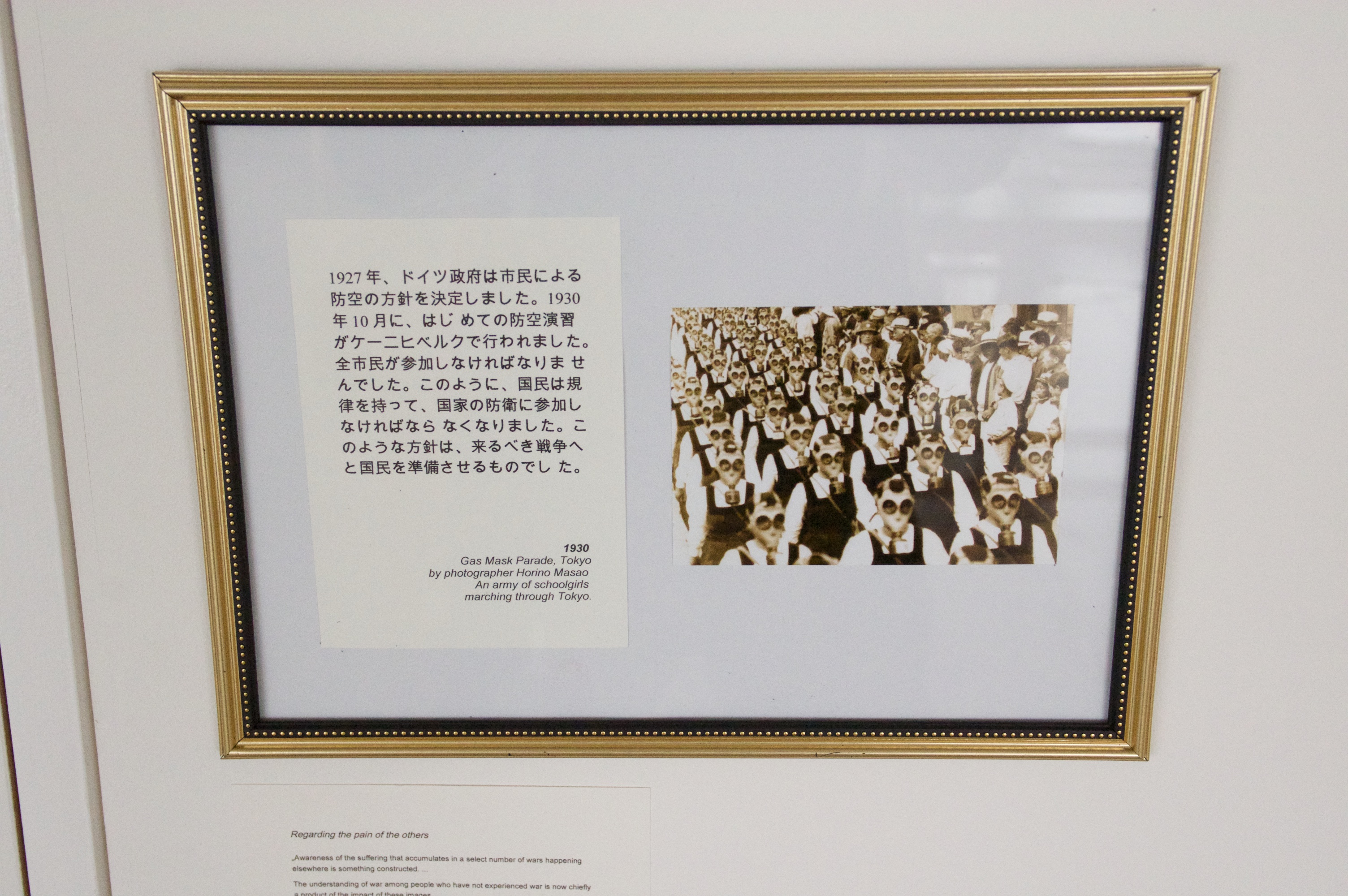





Japan 2016 | This project at TOKAS shows the intertwined wartime memories of Japan and Germany. In the work image and translation recall related historical events in a different manner.
„Awareness of the suffering that accumulates in a select number of wars happening elsewhere is something constructed. …
The understanding of war among people who have not experienced war is now chiefly a product of the impact of these images. …
Something becomes real by being photographed. But a catastrophe that is experienced will often seem eerily like its representation.“
Susan Sontag, 2003
The Japanese text interprets the images in a different historical context than the English explanation. One hundred years ago, the sociologist Maurice Halbwachs and the art historian Aby Warburg developed two theories of a “collective” or “social memory”. In doing so, both shift the problem of the continuation of collectively shared knowledge from biology to culture. In different societies, the most general basic attitudes to history and the past, and thus to the function of remembering in general, are different. Some remember the past out of fear of deviating from its example, others out of fear of having to repeat it. The openness of these options gives the question of the connection between culture and memory its cultural typological interest. In its cultural tradition, a society becomes visible: for itself and for others. Which past it allows to become visible in it and to emerge in the value perspective of its identificatory appropriation says something about what it is and what it wants to achieve.






6 plates which mention in Japanese some event which took place in Germany. The picture and the English text shows a kind o similar incident in Japan.
> Where does the image begin to settle in the brain.
#1 1945 The bunker where Emperor Hirohito made the recording announcing Japan had surrendered and the war was therefore over. || The Japanese text explains the bunker in Berlin when also Eva Braun died. #2 1938 Japanese experts inspect the scene of the ‘railway sabotage’ on South Manchurian Railway. The Imperial Japanese Army accused Chinese dissidents of the act and responded with a full invasion that led to the occupation of Manchuria. Actually Lt. Suemori Kawamoto detonated the dynamite. || The Japanese text tells about the made-up border violation in Poland 1939. #3 1918 Street of Paris by Tsuguharu Foujita who lived since 1913 in Paris. He came back to Japan in 1933. From the 1941 on he worked on government commission as a war painter in Manchuria. || The Japanese text explains the painting skills of the “Führer”. #4 Parade, Tokyo by photographer Horino Masao An army of schoolgirls marching through Tokyo. || Japanese: 1927 decided the German government to take measures for the civil air defense. In October 1930, the first air raid drill was held in Konigsberg. #5 1945 Saipan civilians committing suicide rather than surrendering to American troops. || In Japanese it is about when the Soviet army took the city of Demmin on April 30, 1945, panic broke out beneath the residents. Mass hysteria has taken hold. Many are not waiting for the invasion, they were already a way out in death. Within three days, thousands of people killed themselves. A majority of Germans was well aware of the guilt of their country. With the apparent defeat many feared retribution. || IN#6 Studio portrait of Jan Ruff O’Herne, Dutch women who were interned and raped by the Japanese Imperial Army in Indonesia. The other photo shows the forced prostitutes Irka, taken secretly in the concentration camp Auschwitz brothel. || In Japanese: Between 1942 and 1945 in ten Nazi concentration camps brothels were set up and should serve as an incentive to male prisoners overtime. About 210 woman were forced to prostitution in brothels . This was done on command by Heinrich Himmler.
